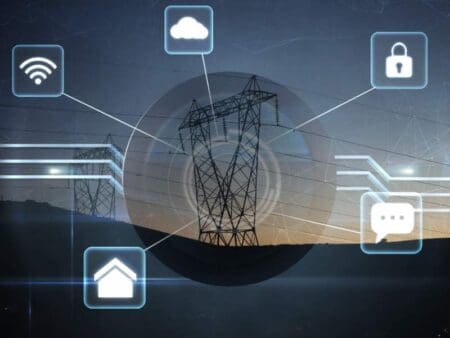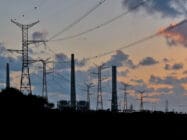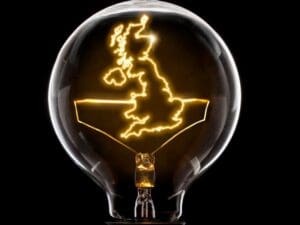
In the face of renewables’ intermittency issues, which result in fossil fuels remaining a prominent power source, virtual power plants, writes Nostromo Energy CEO Yoram Ashery, might provide the answer we’ve been looking for.
Over the past few decades, commercial buildings have become a focal point in the fight to minimise the global carbon footprint because they consume a lot of energy due to the increased use of cooling, heating, ventilation systems, lighting and computers. Some companies even use cleanrooms, which require up to 50 times more energy than non-classified spaces.
This means that commercial buildings, although unable to choose whether they use fossil or renewable energy as they are subject to the grid’s supply, have a lot to gain and contribute by using more renewable energy sources. In the near future they may not have a choice as commercial buildings face evolving regulation that either incentivizes owners to make the sustainable move or requires them to do so.
Although fossil fuels remain a prominent power source due to their replacements’ intermittency, Virtual Power Plants (VPPs) will solve this unreliability problem and propel buildings and businesses in the right direction. Here’s how.
Have you read:
Dutch supplier Eneco kicks off Myriad virtual power plant
Study finds virtual power plants could provide resource adequacy and save utilities billions
Virtual power plants to the rescue
It’s already widely acknowledged that sustainable energy is the future for power, with the Australian Energy Market Operator (AEMO) recently declaring long-term energy storage “the most pressing utility scale needed in the next decade” – the ability to store energy from renewable resources for later use is the answer.
VPPs have been around for the better part of 40 years. They give the ability to harness sustainable energy by bringing together multiple energy sources, also referred to as Distributed Energy Resources (DERs), such as solar panels, electric batteries, wind turbines.
The VPP then forms a system based on supply and demand that can be controlled according to the current grid needs so that it can avoid consuming power when it’s expensive and limited to consuming power when it’s cheap and abundant, all the way to providing power back to the grid when supply is limited – all in the hope of reducing the grid’s reliance on fossil fuels.
Some of the above mentioned energy resources are only relevant during the daytime (for example, solar panels) and become less efficient on cloudy or rainy days; wind-based energy depends on the fluctuating airflow, wave energy relies on ocean waves to generate electricity, and hydropower utilizes the gravitational force of falling or flowing water.
So there is some justification for businesses to hesitate in relying more on renewable energy sources, which they deem as unstable. Considering that a single hour of downtime can cost organisations over $100,000 from lost revenues and reputational damage, businesses are rightfully hesitant to rely on these solutions without fossil fuel backup.
However, although the grid currently runs in a one directional way and renewable energy sources are less consistent individually – when they become part of an extensive network of devices that supports a building’s energy needs around the clock, regardless of the time of day or weather conditions, they create a consistent and reliable energy supply alternative.
Also of interest:
Germany’s sonnen announces 250MWh VPP as ‘Europe’s largest’
Energy Transitions Podcast: Overcoming funding pitfalls for net-zero projects
VPPs: Multiple energy sources, multiple advantages
In our ‘smart’ age, the new generation of VPPs present a far more efficient way of using renewable energy. Today’s VPPs live up to their promise by eliminating integrating more resources into the grid, leveraging its flexibility, enabling greater share of renewable energy sources thus optimizing the grid’s capacity so it can do more with less.
This means that the VPPs are able to perform two activities. The first is control demand flexibility, the easier of the two, which turns off power demand when the grid is overworked. The second is to provide a supply service by supplying power back to the grid in exchange for lower rates, flat fees or similar.
Through these services, the risk of relying on sensitive sources is minimized and the ability to provide a continuous supply of energy based on actual demand is strengthened. Simultaneously, at times when supply is high, onsite or ‘ behind the meter’ energy storage solutions ensure that the surplus energy isn’t lost but stored to be utilised when needed.
Commercial buildings can then be part of a grid that provides a smart, reliable, cost-effective solution that considers both the planet’s and their business’ needs. Additionally, buildings can choose whether to include their energy assets as part of the VPP network, such as EV charging, and help the grid become more stable.
By doing so, VPPs enable commercial buildings to contribute to a greater solution together with the climate-responsible grid, to do their best without taking unreasonable risks, creating an energy ecosystem that is better for businesses, communities, and the planet.
As VPPs advance, so does our ability to move away from harmful energy resources and offer future generations a more sustainable approach. Doing so without asking businesses to sacrifice their ability to plan ahead and meet revenue goals is critical.
As the load on the grid is expected to grow exponentially in the coming months and years, now is the time to scale up and move forward to make the VPP part of the solution. The time is ripe to give VPP its time to shine.
ABOUT THE AUTHOR

Yoram Ashery has been the CEO of storage tech company Nostromo Energy since May 2021, specialising in managing technology companies, designing and executing international go-to-market plans and leading business development and complex financing and commercial transactions.








